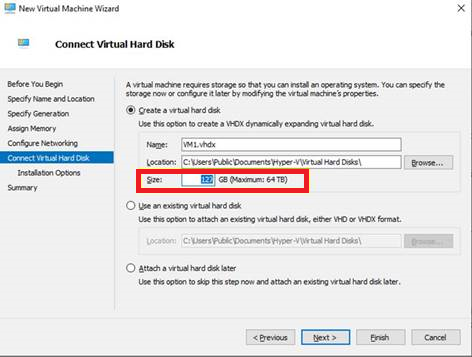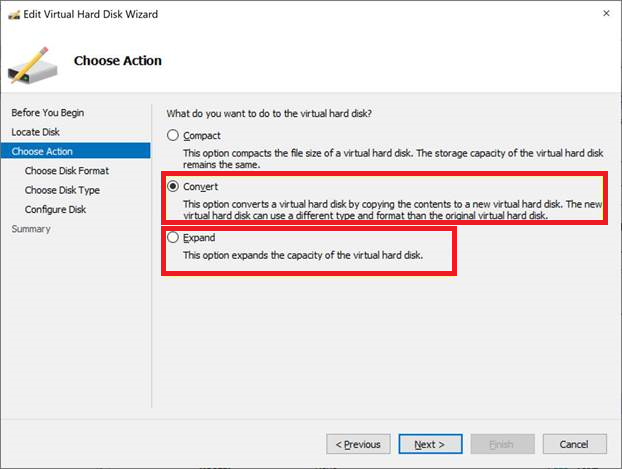Bring a Windows custom image from a physical lab environment to Azure Lab Services
Important
Azure Lab Services will be retired on June 28, 2027. For more information, see the retirement guide.
This article describes how to import a Windows-based custom image from a physical lab environment for creating a lab in Azure Lab Services.
The import process consists of the following steps:
- Create a virtual hard drive (VHD) from your physical environment
- Import the VHD into an Azure compute gallery
- Attach the compute gallery to your lab plan
- Create a lab based by using the image in the compute gallery
Before you import an image from a physical lab, learn more about recommended approaches for creating custom images.
Prerequisites
Your Azure account has permission to create an Azure managed disk. Learn about the Azure RBAC roles you need to create a managed disk.
Restructure each virtual machine image so that it only includes the software that is needed for a lab's class. Learn more about moving from a Physical Lab to Azure Lab Services.
Prepare a custom image using Hyper-V Manager
First, create a virtual hard disk (VHD) for the physical environment. The following steps describe how to create a VHD from a Windows Hyper-V virtual machine (VM) by using Hyper-V Manager:
Create a Hyper-V virtual machine in your physical lab environment based on your custom image.
The VM must be created as a Generation 1 VM.
Use the Default Switch network configuration option to allow the VM to connect to the internet.
The VM's virtual disk must be a fixed size VHD. The disk size must not be greater than 128 GB. When you create the VM, enter the size of the disk as shown in the below image.

Azure Lab Services does not support images with disk size greater than 128 GB.
Learn more about how to create a virtual machine in Hyper-V.
Connect to the Hyper-V VM and prepare it for Azure by following these steps:
- Set Windows configurations for Azure.
- Check the Windows services that are needed to ensure VM connectivity.
- Update remote desktop registry settings.
- Configure Windows Firewall rules.
- Install Windows updates.
- Install Azure VM Agent and extra configuration
You can upload either specialized or generalized images to a compute gallery and use them to create labs. The previous steps create a specialized image. If you need a generalized image, you also have to run SysPrep.
You should create a specialized image if you want to maintain machine-specific information and user profiles. For more information about the differences between generalized and specialized images, see Generalized and specialized images.
Convert the default Hyper-V
VHDXhard disk file format toVHD:In Hyper-V Manager, select the virtual machine, and then select Action > Edit Disk.
Next, select Convert to convert the disk from a VHDX to a VHD.

If you expand the disk size, make sure that you do not exceed 128 GB.
Learn more about how to convert a virtual disk to a fixed size VHD.
Alternately, you can resize and convert a VHDX by using PowerShell:
Upload the custom image to a compute gallery
Next, you upload the VHD file from your physical environment to an Azure compute gallery.
Upload the VHD to Azure to create a managed disk.
You can use either Storage Explorer or AzCopy from the command line, as shown in Upload a VHD to Azure or copy a managed disk to another region.
If your machine goes to sleep or locks, the upload process may get interrupted and fail. Also, make sure after AzCopy completes, that you revoke the SAS access to the disk. Otherwise, when you attempt to create an image from the disk, you encounter an error: Operation 'Create Image' is not supported with disk 'your disk name' in state 'Active Upload'. Error Code: OperationNotAllowed.
After you've uploaded the VHD, you should now have a managed disk that you can see in the Azure portal.
The Azure portal's Size+Performance tab for the managed disk allows you to change your disk size. As mentioned before, the size must not be greater than 128 GB.
In a compute gallery, follow these steps to create an image definition and version.
Choose Gen 1 for the VM generation.
Choose whether you're creating a specialized or generalized image for the Operating system state
For more information about the values you can specify for an image definition, see Image definitions.
You can also choose to use an existing image definition and create a new version for your custom image.
Follow these steps to create an image version.
The Version number property uses the following format: MajorVersion.MinorVersion.Patch. When you use Azure Lab Services to create a lab and choose a custom image, the most recent version of the image is automatically used. The most recent version is chosen based on the highest value of MajorVersion, then MinorVersion, then Patch.
For the Source, choose Disks and/or snapshots from the drop-down list.
For the OS disk property, choose the disk that you created in previous steps.
For more information about the values you can specify for an image definition, see Image versions.
Create a lab
Now that the custom image is available in an Azure compute gallery, you can create a lab by using the image.
Create the lab and select the custom image from the compute gallery.
If you expanded the disk after the OS was installed on the original Hyper-V VM, you may also need to extend the C drive in Windows to use the unallocated disk space. Log into the lab's template VM and follow these steps to extend a basic volume.